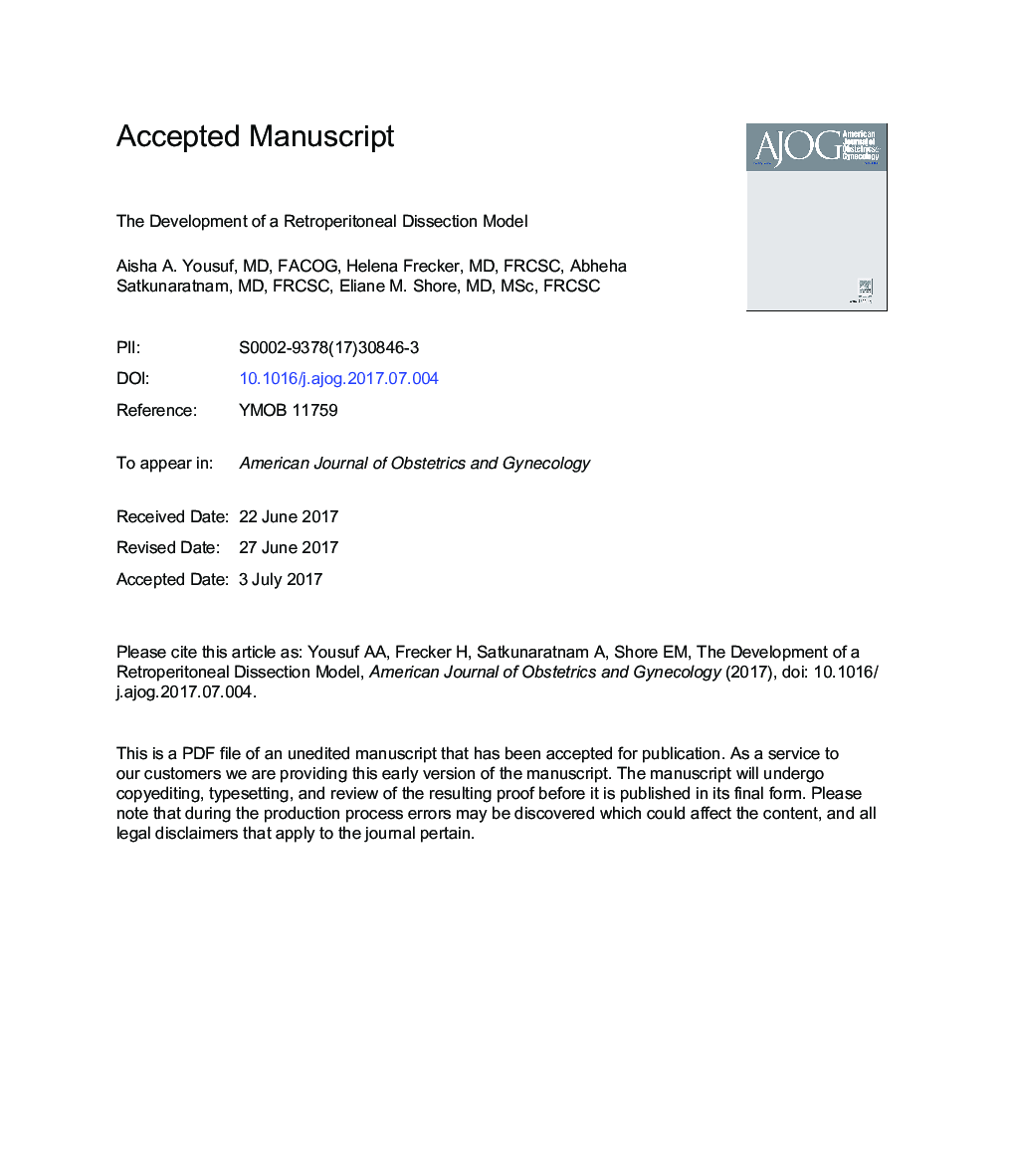| Article ID | Journal | Published Year | Pages | File Type |
|---|---|---|---|---|
| 5675642 | American Journal of Obstetrics and Gynecology | 2017 | 16 Pages |
Abstract
Knowledge of ureteric anatomy is essential for ureteric injury prevention in laparoscopic gynecologic surgery. Rates of injury increase with limited surgical experience and reduced surgical volume. Currently, there are no low-fidelity or high-fidelity simulation models for teaching and practicing ureteric dissection. Our goal was to design a laparoscopic simulation model for retroperitoneal anatomy with high face validity that is low-cost and easily reproducible. A low-fidelity 3-dimensional simulation model was developed that represents key anatomic structures encountered during retroperitoneal dissection and ureteric identification. Materials, construction steps, and costs were determined. The models were trialed by expert laparoscopic surgeons. Demographic information that included age, gender, surgical experience, and complex laparoscopic case volumes was collected. Face validity was assessed with a 5-item Likert-scale. The total cost of 1 model ranged from $65 to $75. The majority of the materials that were used were reusable, except for 2 components that cost <$1 per use. Seven expert surgeons participated in the study, all of whom were fellowship-trained minimally invasive gynecologic surgeons or currently enrolled in this type of fellowship program. Participants agreed or strongly agreed that the model resembled the texture of the ureter, vessels, and peritoneal layer (n=6; 86%), approximated the correct anatomic course of the ureter (n=7; 100%), and closely approximated live surgery (n=5; 71%). They also agreed or strongly agreed that the model would be useful for teaching laparoscopic retroperitoneal dissection (n=7; 100%), for assessing a learner's ability before performing in the operating room (n=6; 86%), was low-cost (n=7; 100%), and was easily reproducible (n=6; 86%). This unique model fills a gap in laparoscopic simulation training. No other low- or high-fidelity models for laparoscopic retroperitoneal ureteric dissection have been identified in the literature. This simulation model is low-cost, easily reproducible, closely resembles retroperitoneal dissection during laparoscopic gynecologic surgery, and can be used for education and assessment.
Related Topics
Health Sciences
Medicine and Dentistry
Medicine and Dentistry (General)
Authors
Aisha A. MD, FACOG, Helena MD, MSc(HQ), FRCSC, Abheha MD, FRCSC, Eliane M. MD, MSc, FRCSC,
